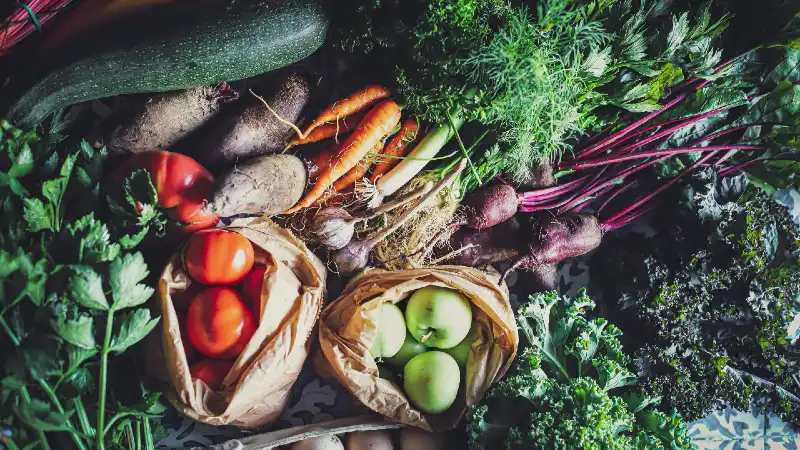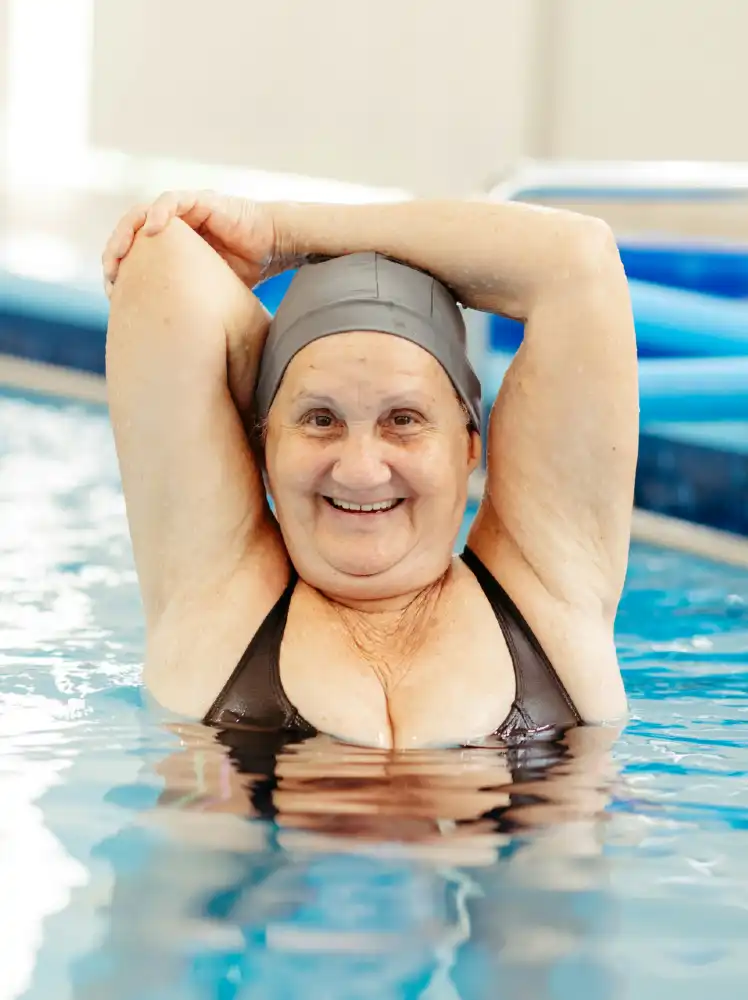The Best Weight Loss Program For Senior Women: Effective And Safe Strategies
If you’re a senior woman looking to lose some weight, you might be noticing that what worked in the past doesn’t seem as effective now. That’s why finding the best weight loss program for senior women is crucial. As we age, our bodies go through changes, and women experience unique shifts like a slowing metabolism and hormonal fluctuations due to menopause.
Our metabolism naturally slows down as we get older, which can make weight loss more complex. Menopause, with its hormonal roller coaster, further adds to the challenge, affecting metabolism and distribution of body fat.
Distinguishing fact from fiction is crucial here. There’s a lot of misinformation out there – quick fixes and miracle diets that promise the world. I’m here to help you to focus on what’s genuinely effective. This isn’t just about losing weight; it’s about doing it in a healthy, sustainable way that’s tailored to your body’s needs.
Prioritizing Safety: A Balanced Approach to Weight Management
In my opinion, when setting out to manage our weight, safety and balance should be the primary focus. This isn’t just about shedding pounds, it’s also about nurturing the body and recognizing its changing needs over time.
I would say that the best weight loss program isn’t really a program or a diet, but a lifestyle. Overly restrictive diets can do more harm than good, especially as we age. Risky supplements that promise quick results can often overlook the longer-term health implications or interactions with medications.
Instead, try to incorporate a diverse, nutrient-dense diet that includes adequate proteins, fibers, healthy fats, vitamins, and minerals. These are essential not just for weight management, but for overall health and combating age-related complications. And, it’s not as complicated as you might think it sounds.
I should also mention that it’s a good idea to have medical supervision while embarking on a weight loss journey, particularly for senior women. Regular health check-ups and consultations can help in identifying and managing any potential risks, ensuring that the weight loss program complements your individual health profile.
Delicious and Nutritious: Eating Your Way to a Healthier You
These next sentences are important to understand before getting started. Create a holistic strategy that promotes overall well-being. The building blocks are interlocked, with each one amplifying the effectiveness of the others. Doing just one thing might not give you the results you’re after.
The most important building block is your diet, what you eat. I mentioned that a balance of lean proteins, healthy fats, whole grains, and plenty of fruits and vegetables are the starting point. If you think this sounds boring and bland I urge you to give it a chance. It doesn’t have to be. You might need some time to adjust your taste buds and find your new favorites, but I’m convinced everyone can do it. It doesn’t have to be every meal, every day all week long. Again, find a balance.
To illustrate how to make these choices, let’s dive into a healthy recipe example that’s not only delicious but also perfectly tailored to the nutritional needs of senior women.
Healthy Recipe Example: Quinoa and Roasted Vegetable Salad
One delicious and nutrient-packed recipe that is perfect for you is a Quinoa and Roasted Vegetable Salad. Here’s how to make it and why it’s so beneficial:
Ingredients:
- 1 cup quinoa
- 2 cups water or low-sodium vegetable broth
- 1 red bell pepper, chopped
- 1 zucchini, chopped
- 1 red onion, chopped
- 2 cups spinach
- 1 tablespoon olive oil
- 1 teaspoon dried oregano
- Salt and pepper to taste
- Optional: Feta cheese or avocado slices for added healthy fats
Instructions:
- Preheat your oven to 400°F (200°C).
- Rinse the quinoa under cold water, then cook it in water or vegetable broth according to the package instructions. Set aside to cool.
- Toss the chopped bell pepper, zucchini, and red onion with olive oil, oregano, salt, and pepper. Spread them on a baking sheet and roast for 20-25 minutes, or until tender and slightly caramelized.
- Once the vegetables are done, combine them with the cooked quinoa and spinach. The residual heat will wilt the spinach just enough.
- Optionally, top with a sprinkle of feta cheese or avocado slices for added flavor and healthy fats.
Why It’s Healthy:
- Quinoa is a complete protein, meaning it contains all nine essential amino acids. This is especially important for elder women to maintain muscle mass as they age.
- Vegetables like bell peppers, zucchini, and spinach are rich in vitamins A, C, and K, as well as antioxidants, which support immune function and skin health.
- Olive oil provides healthy monounsaturated fats, which are good for heart health.
This meal is balanced, providing a good mix of protein, healthy fats, and fiber, which helps in keeping you full longer, supporting weight loss, and providing sustained energy throughout the day.
If you’re worried about not feeling full add some more proteins. You can add some grilled chicken breasts, tofu, nuts or seeds, avocado, or some legumes. These will all make you feel full longer without compromising the healthiness of the dish.
The Best Weight Loss App For Senior Women – MyFitnessPal
Embarking on a weight loss journey can feel overwhelming, especially when it comes to understanding the nutritional content of the food you’re eating and keeping track of your daily intake. This is where an app like MyFitnessPal comes in as an incredibly valuable tool.
What is MyFitnessPal?
MyFitnessPal is a popular app designed to help you track your diet and exercise. With its extensive database of over 11 million foods, including many brand-name items, you can easily log your meals and see a detailed breakdown of the calories, macronutrients (carbs, proteins, fats), and micronutrients (vitamins and minerals) you’re consuming.
How Can It Help You?
- Personalized Goals: MyFitnessPal allows you to set personalized goals based on your age, weight, activity level, and weight loss objectives. Whether you’re aiming to shed a few pounds, maintain your current weight, or even gain muscle, the app tailors its recommendations to your specific needs.
- Food Logging Made Easy: Keeping track of everything you eat might sound tedious, but MyFitnessPal makes it simple. With its barcode scanner, you can quickly log packaged foods, and its vast database ensures you can find almost any food you consume, even at restaurants.
- Nutritional Insights: One of the key benefits of using MyFitnessPal is the ability to gain deeper insights into your eating habits. You’ll be able to see how your daily intake stacks up against your goals, helping you make more informed food choices that align with your health objectives.
- Exercise Tracking: In addition to food, MyFitnessPal also tracks your physical activity. Whether you’re walking, doing yoga, strength training, or any other exercise, you can log it in the app. This helps you understand the relationship between the calories you consume and those you burn.
- Community Support: MyFitnessPal offers a supportive community where you can connect with others on similar journeys, share tips, recipes, and encouragement. This social aspect can be incredibly motivating, helping you stay on track.
“Using MyFitnessPal opened my eyes to portion sizes and hidden calories. I lost 50 pounds by making small changes, like switching to healthier food options and weighing everything. It’s been an exciting journey, and I’ve discovered so many new foods!” — My FitnessPal Community
Why Should You Consider It?
Using MyFitnessPal can significantly enhance your weight loss efforts by providing the tools you need to understand your diet better, stay accountable, and make informed decisions. It’s like having a nutritionist and fitness coach right in your pocket!
For those interested in trying out MyFitnessPal, they offer both a free version with essential features and a premium subscription that unlocks advanced tools and insights. Whether you’re new to healthy eating or looking to fine-tune your current habits, MyFitnessPal can be a game-changer in achieving your wellness goals.
Implementing Sustainable Changes for Lifelong Health
Finding the right diet plan can seem daunting, especially with all the options out there. But don’t worry too much about finding the perfect one on the first try. Instead, choose something that resonates with you and is endorsed by health professionals. It’s about striking a balance between nutritious foods that support weight loss and those that you enjoy.
When it comes to exercise, remember that what works for a 20-year-old isn’t going to cut it for the more mature body of a senior woman. You’ll want to find an exercise program that’s tailored for your age, ensuring safety and reducing the risk of injury.
In my experience, programs that mix low-impact aerobics with strength training hit that sweet spot, offering a boost to both heart health and muscle maintenance.
Exercise programs mixing low-impact aerobics with strength training
Water Aerobics Classes: These are fantastic because the water provides resistance without straining your joints. It’s a full-body workout that combines aerobic movement and strength exercises in one. Plus, it’s fun and refreshing!
Tai Chi and Pilates: These exercises may not seem like traditional strength training, but they offer slow, deliberate movements that build both strength and balance. It’s perfect for maintaining muscle while keeping your joints happy.
Chair Yoga with Light Dumbbells: Chair yoga can be paired with light dumbbell exercises to add a strength element to your flexibility routine. This combination helps with muscle maintenance and makes your workout feel supportive and safe.
Walking with Resistance Bands: You can take a simple walk up a notch by incorporating resistance bands into your routine. These bands are great for adding strength training to your daily steps without the need for heavy equipment.
wfdsdaf
- test
Must-Know training tips to stay active and strong
- Focus on Flexibility: Incorporating stretching into your daily routine can help you maintain your range of motion and prevent injury. Think of it as a way to keep your body limber and ready for anything.
- Start Slow, Then Build: Don’t feel pressured to jump into high-intensity workouts. Start with what feels comfortable and gradually increase the intensity. The key is consistency, not speed!
- Listen to Your Body: Some days, you’ll feel like you can conquer the world, and other days, you might need to take it easy. That’s okay! Your body knows best, so pay attention to how you feel during and after your workouts.
- Find Joy in Movement: Exercise doesn’t have to be a chore. Whether it’s dancing in your living room, gardening, or walking your dog, find ways to move that make you smile.
- By focusing on these types of activities and tips, you can make exercise enjoyable and effective as you age.
So my question to you today is:
Are you ready to make these changes for a longer, healthier life? Because if you are, there’s a lot of opportunity to find joy and vitality in your golden years. Keep in mind, your first attempt doesn’t need to be your last — life is all about adapting and growing.










